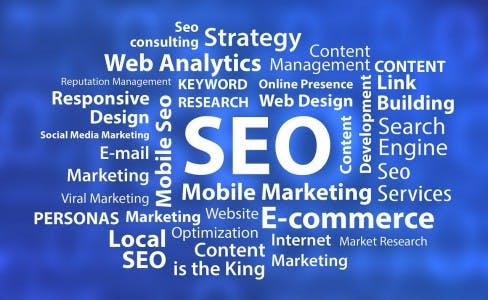Ever since Google introduced the Google Panda and Google Penguin updates, the focus has been shifted greatly on the off-page SEO. And while backlinks and other off-page SEO factors are important, it doesn’t mean that you should just forget about on-page SEO optimization.
On-page SEO optimization, as its name suggests, refers to optimizing the content of your blog post, its URL structure, and other front-end optimization issues that improve your search engine rankings.
Ideally, you should be combining on-page SEO optimization with off-page SEO optimization to extract the best possible results. In this post, we are going to discuss 7 very important on-page SEO optimization tips that everyone must know.
So, here we go.
1. URL Structure
Keyword optimization and keyword density are important on-page SEO aspects, but so is optimizing the URL structure of your web pages. According to Google, it is an important search engine ranking factor.
How can you optimize your web pages’ URL structures? Here are a few simple tips:
First of all, make sure that you include primary and relevant keywords in the URL of the post. This gives you an added advantage when it comes to search engine robots crawling your website.
Secondly, it is important to keep it simple. You can include too many folders and categories, but it is advisable not to. Here is an example of a simple and very clear URL structure from the famous Jon Morrow’s blog “Boost Blog Traffic”.

2. Long-Tail Keywords
Long-tail keywords are the future of on-page SEO.
The competition is getting tougher, and it is becoming harder and harder to rank for popular keywords. Moreover, even if you do manage to get a decent search engine ranking, the lack of conversion rate makes it very difficult to survive for any online business.
So, what’s the solution? It’s, without any doubt, long-tail keywords.
Using long-tail keywords has three distinct advantages:
It gives you an opportunity to rank for more competitive keywords — which is almost impossible if you just target a “head” keyword.
Long-tail keywords provide more specific answers and solutions to your target audience. This leads to a more loyal audience and an increased number of email subscribers.
Last, but not the least, long-tail keywords have arguably the best conversion rates.
If you want to optimize the on-page SEO content, the intelligent way is to go with long-tail keywords.
We have written a useful guide on how to integrate long-tail keywords in your blog posts. Do check it out.
3. LSI Keywords
LSI or Latent Semantic Indexing is another important aspect of on-page SEO and keyword optimization. You may not know about this, but it is one of the major tricks to get your blog posts ranked for different keywords.
Simply put, LSI keywords are a set of different keywords that help Google understand your main topic and what you are trying to rank for. There are several free tools that help you find good LSI keywords. It is then up to you to integrate those LSI keywords into the main content as a part of your on-page SEO optimization strategy.
Here are some of the tools you can use to find LSI keywords:
4. Heading Tags
Optimizing the on-page content with heading tags is a common practice. But if you haven’t been doing it, it is high time you start using appropriate heading tags in your content.
There are basically 6 heading tags that are used:
H1
H2
H3
H4
H5
H6
If you are serious about on-page SEO optimization, it is important to use appropriate heading tags. These heading tags not only make your content more readable to users, but they also indicate search engines how you have divided it.
Moreover, it is also important to place important keywords in the H1 and H2 tags. This makes it easier for search engines to rank your websites for those keywords.
5. Outbound Links to Authority Websites
There is no one definition of good content. But there are a few qualities that are usually associated with good, high-quality website content. For example:
The content is in-depth and comprehensive — usually more than 2,000 words.
It is free of fluff and filler content.
It contains exclusive and really helpful information for the readers.
It also has visual content (images and videos) for the readers.
The content has lots of outbound links to authority websites. This indicates that your only focus is to provide as much value as you can, and this includes providing your users direct routes to more useful content.
Creating such outbound links to authority websites is now an important part of the on-page SEO optimization process. If you are writing a 2000 words blog post, it would be a good idea to link to 10-15 other useful websites and high-quality blog posts.
Given said that it is important not to create these links just for the sake of it. The blog posts and websites you link to should all be of very high-quality and interesting to your readers. In short, they must add value to your content.
When you prove to search engines that your content is a hub of useful information for their users, it gets promoted.
6. Perfectly Optimized Titles

Do you optimize the titles of your blog posts? It is a very important part of the on-page SEO optimization process, and you should pay a lot of attention to it.
Here are a few tips to help you create the perfectly optimized title for your next blog post:
The title of the post should have the primary keyword in it. And it must be natural.
It must be very interesting to the readers so that it may lead to more click-throughs.
Keep the title tag under 55 characters.
The title of the blog post must be wrapped in the H1 heading tag.
Google only displays the first 55-60 characters of the title tag in the search engine. So try to keep it under that limit. Moreover, you can also use a free WordPress plugin like SEO Yoastto preview how Google would show it.
7. Website Loading Speed
Google has officially stated that the loading speed of your website is now an important search engine ranking factor.
Ideally, your website should load in the first 2 seconds. If it takes more than that, then you will have to improve it. According to an estimate, 75% of the users won’t revisit a website that takes more than 4 seconds to load.
So, how can you improve your website’s loading speed?
You can do so by compressing the image file size, removing bad codes, premium hosting services, or by the use of CDN.
Furthermore, another tip would be to sign up for the Google PageSpeed. It can really help you!
In the meanwhile, use a tool like GTMetrix to check the loading speed of your website.
Final Words
Search engine optimization is a constant process. It does not matter if it is off-page SEO or the on-page SEO. You will have to work constantly on it to make your site perform better in the search engines.
While you are focused on generating high-quality backlinks to your website and making its back-end stronger, it is equally important to use the tips mentioned above and do the on-page SEO optimization. It works both ways, and none works without the other.
Good luck!
